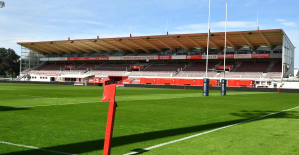At 5:24 a.m. last Tuesday, Villa de Pitanxo issued two alerts. The Spanish fishing vessel's radio beacons sent out automatic warnings which were immediately received and processed by the National Maritime Rescue Coordination Center. Authorities tried to contact the Spanish shipping firm but did not receive a response. Luis Planas, Minister of Agriculture, Fisheries and Food, said that technology has enabled them to detect the location of the incident. He was speaking in the corridors of Congress of Deputies last Wednesday.
The Villa de Pitanxo, a modern ship, was just 20 years old. It had a power output of 878.19kW (1,194.0hp), a length 50.3m, and could carry a maximum weight of 1,120 tonnes. Sources in the sector claim that Spain has a number of technologically-prepared boats. "Especially for long distance. They add that she is very professional and is a pioneer in the field of communication technology and equipment.
Regulation 2847/93 (European Council) "establishes an applicable control regime to the common fisheries strategy, established a system to locate fishing vessels via satellite, to improve management and accuracy of data, and is effective as of 1993.
The regulations have been updated by several Spanish governments to make the vessels more compatible with new technology and to keep up with the latest developments in the sector. The vessel location equipment (ELB) was revealed in Order APA/899/2018 published in the Official State Gazette on August 23.
The order states that the antenna unit will include an approved antenna by the manufacturer. This antenna may be used for the Global Positioning Satellite System's (GNSS) functions and the satellite reception, transmission and transmission system of messages. It also contains two separate antennas approved and approved by manufacturer.
Sources from the fishing sector say that monitoring systems should not be confused or misunderstood as security systems. This section explains that Spanish law requires additional measures depending on the length and type of fishing vessel. They point out that the EPIRB is mandatory.
The emergency position indicating radio beacon (EPIRB), or emergency radio beacon, was the system that alerted at 5:24 AM (peninsular hour) to the alarm of the Galician shipwreck. All ships must carry them, and they transmit quickly on a frequency that Salvamento Maritimo can receive instantly when they come in contact with water.
Radio beacon system for ships.
The radio beacon activates and transmits radio signals using the ship's unique identity number. These radio signals are captured by satellites, processed by them and sent to the nearest maritime rescue coordination centre. This center deciphers the code and contacts ship.
The rescue operation activates if the center doesn't receive a response. This was the case with Villa de Pitanxo. The EPIRB warn messages contain data that allows the location of the radio beacon to been calculated. Even "the most advanced ones can send the coordinates", sources in the shipping sector indicate.
The rescue service involved in the operation will attempt to locate the EPIRB radio beacon and positioning equipment based on the radio signals.
Additionally, on some ships with 300 gross registered tons of cargo, these radio beacons can be activated to detach from their hulls. This is thanks to the Hydrostatic Launch U (HRU), which automatically releases the EPIRB radio transmitter when it reaches a depth of about 4 or 5 metres.
It extends to the surface of water to activate a flash light and give off an audible alarm for rescue personnel. Radio beacons are placed in open areas on the ship to ensure that it doesn't get stuck by any antennas or projections. Minister Planas, in the Congress of Deputies, stated that "this system allowed us to rapidly rescue three people." Sources in the sector add, "But, there's more security technologies."
The size and functions of the ship will also affect the level of technology equipment. "The GDMSS (Global Maritime Distress Safety System) is the next most popular system. They reveal that security equipment is based on communications. This depends on where the ship operates and the bank's size.
This system can perform the following operations: search and rescue coordination, alert (including position), localization (positioning), provision maritime information, general communications, bridge-to-bridge communication, and coordination of search and rescue. The system also has emergency power supplies and redundant warning systems.
The ships are also equipped with a system called VRD, or Voyage Data Recorder, which is similar to the ones found on aircraft. Large ships, like airplanes, must have this system to record all navigation activity for the past 12 hours. It is possible to examine in detail the causes of accidents. This will allow you to clarify the facts and help prevent future ones.
Black box on a ship.
Industry sources confirm that this system is not to be confused with the "blue box that records fishing data", but can collect data such as radiotelephone communications and navigation data with GPS, images of radar, voice conversations, and data from the probe, AIS, and data from the probe.
This will be the instrument that determines the cause of the sinking Villa de Pitanxo, in the waters close to Canada.

 United States: divided on the question of presidential immunity, the Supreme Court offers respite to Trump
United States: divided on the question of presidential immunity, the Supreme Court offers respite to Trump Maurizio Molinari: “the Scurati affair, a European injury”
Maurizio Molinari: “the Scurati affair, a European injury” Hamas-Israel war: US begins construction of pier in Gaza
Hamas-Israel war: US begins construction of pier in Gaza Israel prepares to attack Rafah
Israel prepares to attack Rafah Spain is the country in the European Union with the most overqualified workers for their jobs
Spain is the country in the European Union with the most overqualified workers for their jobs Parvovirus alert, the “fifth disease” of children which has already caused the death of five babies in 2024
Parvovirus alert, the “fifth disease” of children which has already caused the death of five babies in 2024 Colorectal cancer: what to watch out for in those under 50
Colorectal cancer: what to watch out for in those under 50 H5N1 virus: traces detected in pasteurized milk in the United States
H5N1 virus: traces detected in pasteurized milk in the United States Private clinics announce a strike with “total suspension” of their activities, including emergencies, from June 3 to 5
Private clinics announce a strike with “total suspension” of their activities, including emergencies, from June 3 to 5 The Lagardère group wants to accentuate “synergies” with Vivendi, its new owner
The Lagardère group wants to accentuate “synergies” with Vivendi, its new owner The iconic tennis video game “Top Spin” returns after 13 years of absence
The iconic tennis video game “Top Spin” returns after 13 years of absence Three Stellantis automobile factories shut down due to supplier strike
Three Stellantis automobile factories shut down due to supplier strike A pre-Roman necropolis discovered in Italy during archaeological excavations
A pre-Roman necropolis discovered in Italy during archaeological excavations Searches in Guadeloupe for an investigation into the memorial dedicated to the history of slavery
Searches in Guadeloupe for an investigation into the memorial dedicated to the history of slavery Aya Nakamura in Olympic form a few hours before the Flames ceremony
Aya Nakamura in Olympic form a few hours before the Flames ceremony Psychiatrist Raphaël Gaillard elected to the French Academy
Psychiatrist Raphaël Gaillard elected to the French Academy Skoda Kodiaq 2024: a 'beast' plug-in hybrid SUV
Skoda Kodiaq 2024: a 'beast' plug-in hybrid SUV Tesla launches a new Model Y with 600 km of autonomy at a "more accessible price"
Tesla launches a new Model Y with 600 km of autonomy at a "more accessible price" The 10 best-selling cars in March 2024 in Spain: sales fall due to Easter
The 10 best-selling cars in March 2024 in Spain: sales fall due to Easter A private jet company buys more than 100 flying cars
A private jet company buys more than 100 flying cars This is how housing prices have changed in Spain in the last decade
This is how housing prices have changed in Spain in the last decade The home mortgage firm drops 10% in January and interest soars to 3.46%
The home mortgage firm drops 10% in January and interest soars to 3.46% The jewel of the Rocío de Nagüeles urbanization: a dream villa in Marbella
The jewel of the Rocío de Nagüeles urbanization: a dream villa in Marbella Rental prices grow by 7.3% in February: where does it go up and where does it go down?
Rental prices grow by 7.3% in February: where does it go up and where does it go down? Even on a mission for NATO, the Charles-de-Gaulle remains under French control, Lecornu responds to Mélenchon
Even on a mission for NATO, the Charles-de-Gaulle remains under French control, Lecornu responds to Mélenchon “Deadly Europe”, “economic decline”, immigration… What to remember from Emmanuel Macron’s speech at the Sorbonne
“Deadly Europe”, “economic decline”, immigration… What to remember from Emmanuel Macron’s speech at the Sorbonne Sale of Biogaran: The Republicans write to Emmanuel Macron
Sale of Biogaran: The Republicans write to Emmanuel Macron Europeans: “All those who claim that we don’t need Europe are liars”, criticizes Bayrou
Europeans: “All those who claim that we don’t need Europe are liars”, criticizes Bayrou These French cities that will boycott the World Cup in Qatar
These French cities that will boycott the World Cup in Qatar Archery: everything you need to know about the sport
Archery: everything you need to know about the sport Handball: “We collapsed”, regrets Nikola Karabatic after PSG-Barcelona
Handball: “We collapsed”, regrets Nikola Karabatic after PSG-Barcelona Tennis: smash, drop shot, slide... Nadal's best points for his return to Madrid (video)
Tennis: smash, drop shot, slide... Nadal's best points for his return to Madrid (video) Pro D2: Biarritz wins a significant success in Agen and takes another step towards maintaining
Pro D2: Biarritz wins a significant success in Agen and takes another step towards maintaining


















